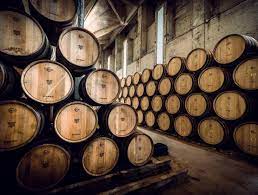In honor of Wine-Knows' upcoming autumn trip to Spain, this is the last segment of May's blog on Spain's wine and food. If there ever was a royal family of nuts, Marcona almonds would certainly be high on the list for succession to the throne. While Marconas haven’t made it into Wikipedia as a separate line item (yet), Costco & Trader Joe’s can’t keep them in stock. If it weren’t for their steep price tag, I imagine there would be huge shortages.
What makes these regal Marconas so irresistible? Although they look somewhat like an almond (but are more round and flat), it’s their buttery taste that seduces. This nut is also a tad sweeter than the standard almond. Marcona’s silky texture also entices, reminiscent of something between a cashew and a macadamia. It is also less dry and has a creamy mouth-feel.
While is California is the world’s biggest almond producer, it is Spain that leads in the production of the noble Marcona. (Although the origin of the Marcona almond is unknown, the traditional almond tree can be traced to Iran.) Today Spain cultivates >100 different types of almonds, but its Marconas are one of the most prized. Grown along Spain’s Mediterranean coast, Marconas are difficult because they produce significantly less than the typical almond tree, and also they are picked in February so are at risk of freezing temperatures.
In Spain Marconas are often used in the country's special nougats & cakesIn the US market, Marconas are simply blanched, roasted, dusted with sea salt, and tossed with enough EVOO to give them an alluring sheen. In Spain, however, Marconas are often used in sweets. The most typical sweet version is the country’s popular type of nougat, although Marconas can also appear in Spanish cakes.
Regardless of preparation, the Queen of Almonds can be very addictive so pay attention!
Viva Espana!














